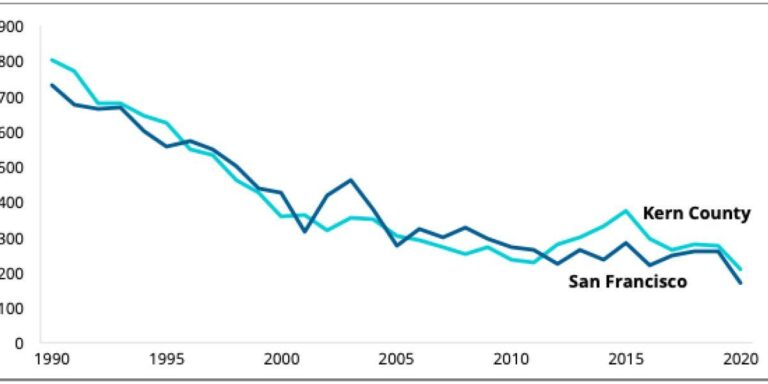Understanding the Rise in San Francisco Shoplifting Reports: The Role of Enhanced Data Reporting
How Revised Reporting Practices Have Influenced Shoplifting Statistics in San Francisco
San Francisco has recently experienced a notable increase in reported shoplifting incidents, a trend largely attributed to changes in how retail theft is documented rather than an actual surge in criminal activity. A prominent local retailer introduced a comprehensive reporting system that led to a doubling of recorded theft cases within a few months. This development reflects a shift toward greater transparency and accountability rather than a sudden spike in shoplifting occurrences.
The retailer’s updated approach includes immediate incident documentation, mandatory theft reporting by employees, and systematic monthly evaluations of theft data. These measures aim to create a safer shopping environment by ensuring timely and accurate information flow. Law enforcement agencies have supported this initiative, noting that improved data collection enables more strategic deployment of resources.
However, this change has sparked debate among industry experts and community leaders about the challenges of interpreting crime data and the need for standardized reporting protocols across retailers. The table below illustrates the contrast in reported shoplifting cases before and after the implementation of the new system:
| Period | Number of Reported Incidents | Reporting Method |
|---|---|---|
| January – March 2023 | 45 | Conventional Reporting |
| April – June 2023 | 90 | Enhanced Real-Time Reporting |
- Employee Education: Training staff to promptly identify and report theft incidents.
- Centralized Data Systems: Consolidating all theft reports into a shared platform accessible to management and law enforcement.
- Community Collaboration: Partnering with local authorities to develop targeted prevention strategies.
Retailers’ Challenges and Shifting Consumer Attitudes Amid Rising Theft Reports
The increase in reported shoplifting has compelled retailers to rethink their security protocols and customer relations. While the rise in numbers is partly due to improved reporting, it has nonetheless raised concerns among business owners and shoppers about safety in retail spaces. Retailers face the delicate task of maintaining transparency without fostering fear or mistrust among their customers.
Consumer reactions to the new reporting practices have been mixed. Some appreciate the honesty and detailed tracking of incidents, while others worry that the data might exaggerate the prevalence of theft, potentially casting certain neighborhoods or groups in an unfairly negative light. Influential factors shaping public perception include:
- Media Coverage: How news outlets portray the increase in theft.
- Community Feedback: Responses to heightened security and policing efforts.
- Retailer Messaging: Communication strategies addressing safety and loss prevention.
| Dimension | Retailer Actions | Customer Reactions |
|---|---|---|
| Transparency | Enhanced incident reporting systems | Varied levels of trust and concern |
| Security Enhancements | Expanded surveillance and staff training | Increased vigilance, occasional unease |
| Brand Image | Proactive communication campaigns | Mixed effects on customer loyalty |
Expert Insights: Decoding Crime Data and Understanding True Theft Trends
Specialists in criminology and data analysis stress the importance of carefully evaluating crime statistics, especially when changes in data collection methods occur. The apparent doubling of shoplifting cases in San Francisco is largely a byproduct of revised reporting standards rather than a genuine escalation in theft. This adjustment, designed to improve transparency, has unintentionally distorted public understanding and media narratives.
Experts recommend that policymakers and the public consider several critical factors when interpreting such data:
- Methodological Consistency: Are data collection techniques stable over time?
- Contextual Influences: What external elements might affect reporting behavior?
- Comparative Validity: Can the data be reliably compared across different regions or timeframes?
| Aspect | Previous Reporting | Current Reporting |
|---|---|---|
| Incident Definition | One theft counted per case | Multiple stolen items recorded individually |
| Frequency of Reporting | Monthly summaries | Daily detailed entries |
| Data Detail Level | Aggregate overviews | Itemized transaction-level data |
These distinctions highlight the necessity of looking beyond headline figures to grasp the true nature of crime trends. Without such critical analysis, there is a risk of implementing misguided policies that misallocate resources and fail to address the root causes of retail theft.
Strategies for Transparent Reporting and Effective Policy Development
To build public trust and ensure clarity, it is essential for retailers and city officials to adopt standardized definitions and consistent metrics when reporting shoplifting incidents. This approach minimizes misleading fluctuations caused by procedural changes. Regular training for employees on uniform reporting practices can further enhance data accuracy, ensuring that statistics genuinely reflect on-the-ground realities.
Policymakers should integrate these refined datasets into their decision-making processes, avoiding knee-jerk reactions to apparent crime spikes driven by reporting modifications. Establishing a transparent review mechanism involving retailers, law enforcement, and community stakeholders can promote balanced and effective crime prevention strategies. The table below outlines a recommended classification system for theft-related reports to improve clarity and comparability:
| Category | Definition | Illustrative Example |
|---|---|---|
| Verified Theft | Confirmed incidents through loss prevention or police verification | Shoplifting captured on security footage |
| Attempted Theft | Detected but unsuccessful theft attempts | Suspect apprehended before exiting the store |
| Suspicious Behavior | Unconfirmed activities warranting further scrutiny | Individuals loitering near high-value merchandise |
- Conduct periodic audits of reporting procedures to maintain consistency.
- Implement transparent data dashboards accessible to stakeholders.
- Promote ongoing dialogue between retailers, law enforcement, and community members.
Final Thoughts
As San Francisco navigates the complexities surrounding the recent rise in reported shoplifting cases, it becomes clear that enhanced reporting methods have played a significant role in shaping public perception. While these improvements offer a more detailed understanding of retail theft, they also underscore the need for careful interpretation of crime data and thoughtful policy responses. Moving forward, sustained transparency, collaborative efforts, and data-driven strategies will be vital in effectively addressing shoplifting and supporting the city’s commercial vitality.




